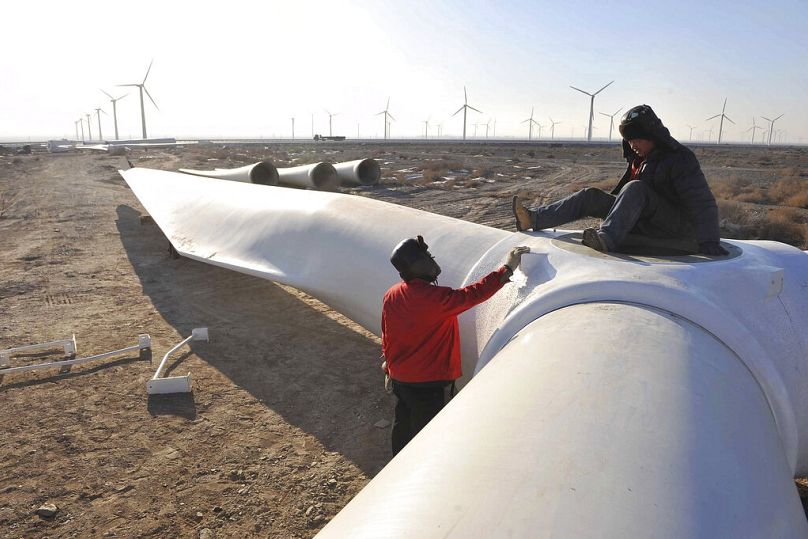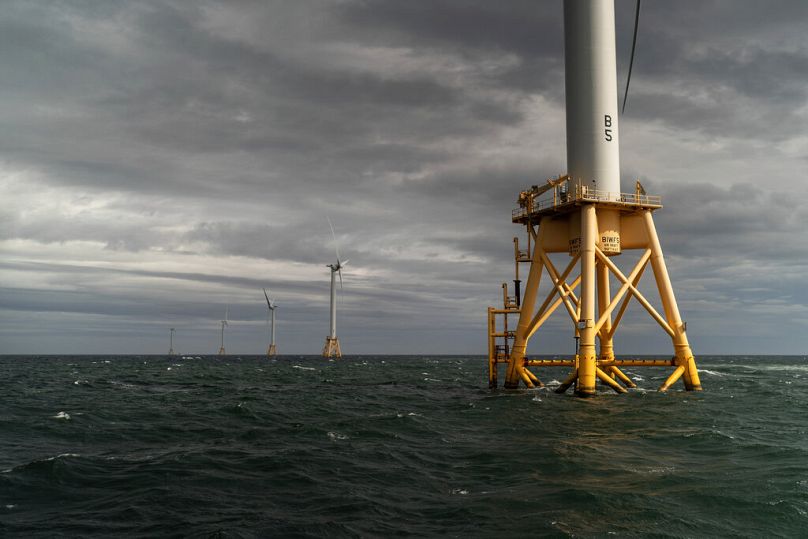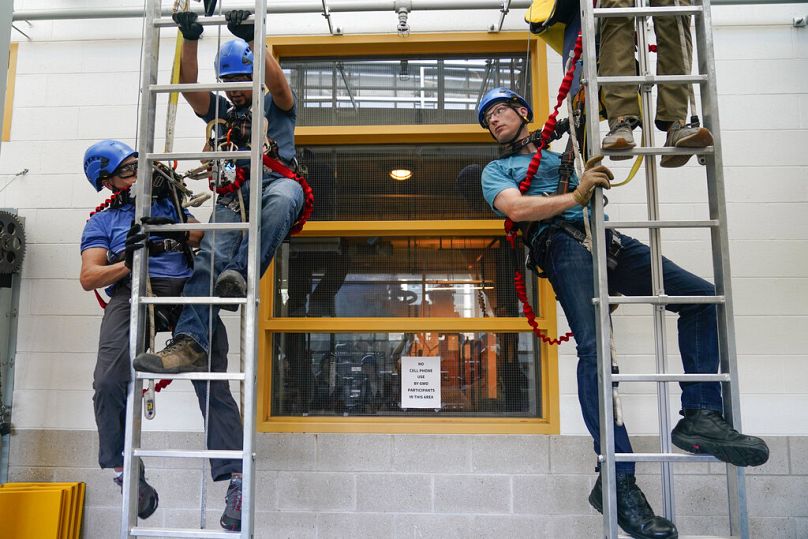Britain is alone among the top ten countries leading the energy transition in lacking a domestic wind energy leader in the market. As a result, other European energy giants are reaping the benefits, Carla Subirana writes.
There are more wind farms across British waters than anywhere else in the world, but local businesses and workers have yet to reap the rewards.
That is a huge policy mistake.
When turbine blades began spinning last August at Hornsea 2 — the world’s biggest offshore wind farm off the coast of Yorkshire — it was a symbolic victory for the UK in its attempts to reclaim its position as the leading nation in the offshore wind market.
The country famously holds the largest share of offshore wind capacity in the world, followed by China and Germany.
However, promises that offshore wind would spark a new industrial revolution for Britain have been blown off course, as the country is yet to enjoy a manufacturing and jobs boom.
UK still does not have its own national wind-based energy giant
That is because most offshore wind developers are foreign-owned.
Of all current and pending British offshore wind capacity, 82.2% is owned by companies located overseas, according to the Common Wealth think tank.
On top of that, more than two-thirds of offshore wind firms operating in the UK have their base elsewhere in Europe.
The businesses that make up the supply chain — the makers of blades, foundations and high-voltage cables — often come from abroad, too.
Of the four companies that accounted for 55% of new orders globally of turbine manufacturing in 2019, not a single one was British.
Although the government has handed out generous subsidies during the past decade to incentivise the development of new offshore wind farms, and capacity has grown twentyfold, the UK is alone among the ten main countries leading the energy transition in lacking a national champion.
As a result, it is European energy giants such as Denmark’s Ørsted and Norway's state-owned Equinor who are investing in building wind farms and taking in subsidy payments in return.
Threat of being left behind in global renewables race
Moreover, a study by Common Wealth found that almost half of Britain’s offshore wind capacity is owned by foreign public companies, which effectively means that UK taxpayers are paying for hospitals in Denmark or Norway.
The study found that last year people in Britain sent £2.56 billion (€2.89bn) in payments to state-owned foreign offshore wind generators.
In the global renewables race, there is still a lot to be done by domestic policymakers to ensure that local companies are able to capture a bigger share of the overall spending on offshore wind developments.
The offshore developers have agreed with the government that by 2030, 60% of the output by value will be spent with UK-based suppliers, a notable increase from the current 48%.
However, while capital expenditure accounts for the bulk of spending and jobs on offshore wind projects, the government will require less than half of it to go into the British economy.
For local businesses to reap the rewards of the offshore wind boom, the target on capital expenditure, or capex, spending should be more ambitious.
What about those who want green reskilling?
Policymakers should help modernise ports and manufacturing infrastructure, too.
Decades of underinvestment — Britain consistently invests less than France, Germany and the US — and low productivity growth have left British companies scrambling to compete with the more modern and efficient facilities elsewhere in Europe and Asia.
In addition, support should be put in place for the oil and gas workers wanting green reskilling.
With 30,600 people directly employed in the offshore oil and gas industry across the UK in 2019, there is a pool of potential workers who could shift to the cleaner side of the energy sector.
However, studies have found that those workers are forced to pay thousands for training courses and are often required to repeat training they have already done.
Respondents to a survey of more than 600 offshore workers by Friends of the Earth Scotland, Platform and Greenpeace, found that workers spent £1,824 (€2,060) on average per year on training.
Greenpeace called for the government to introduce an “offshore passport” that would allow workers to easily transfer their skills and experience between sectors.
The government could also help renewable companies train unskilled workers by paying 50% of their salaries during the training process.
Incentives to build a domestic champion a priority
Still, the single biggest thing the government should focus on is putting the right incentives in place to build a homegrown champion — for example, by raising production tax credits for local renewable energy companies.
And if Britain really wanted to be at the top of the off shore energy game, the shiny main offices would most likely be located at home, not elsewhere.
That would make it easier to bring production home to boost regional economies and exploit Britain’s comparative advantage in making knowledge to set up R&D centres to explore technical problems through research.
While pledges that the UK will benefit from a green industrial revolution seem to have gone with the wind, the government still has time to sail the country in the right direction.
_Carla Subirana is an economist who has worked as a policy analyst for the Bank of England and Europe analyst for Economist Intelligence.
_
At Euronews, we believe all views matter. Contact us at view@euronews.com to send pitches or submissions and be part of the conversation.






